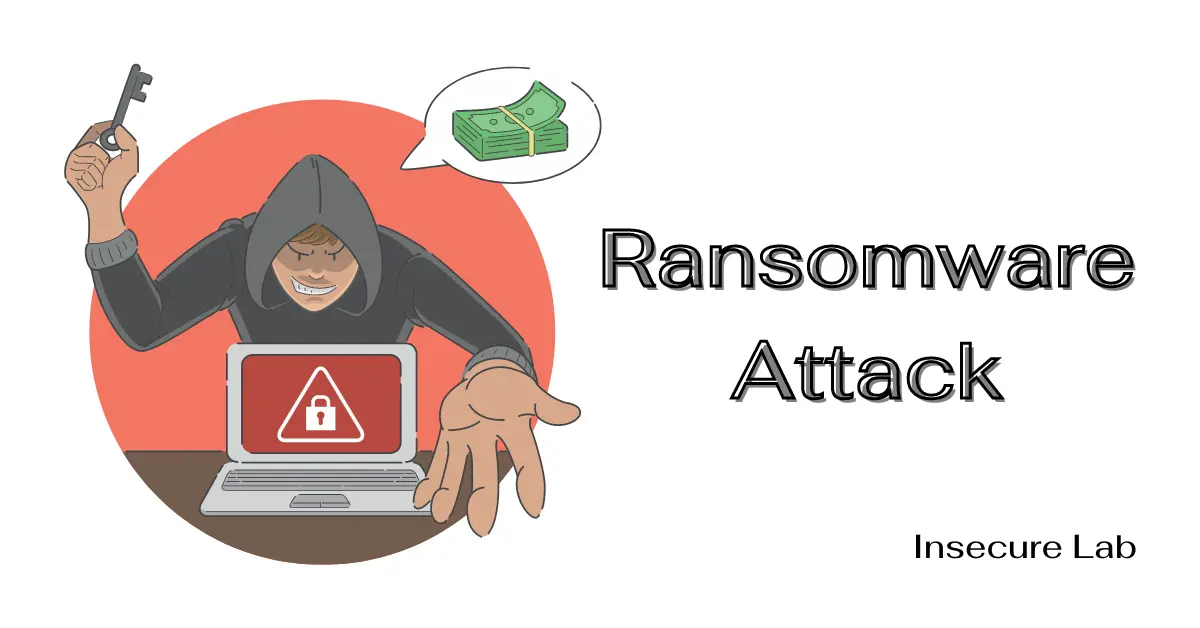🔍 Search
📥 Subscribe
Ransomware

Table of Contents
This guide provides an in-depth look at ransomware, its types, how attacks are carried out, examples, and prevention strategies in cybersecurity.
What is Ransomware?
Ransomware is a type of malicious software (malware) designed to block access to a computer system or data until a sum of money (ransom) is paid. Often, ransomware encrypts the victim's data, making it inaccessible and demands payment for the decryption key.
In recent years, ransomware attacks have become increasingly prevalent and sophisticated, targeting businesses, governments, and individuals, causing significant financial losses, data breaches, and operational disruptions.
Types of Ransomware
1. Crypto Ransomware
This is the most common type. It encrypts files on the victim's system, making them inaccessible until the decryption key is provided upon payment of the ransom.
2. Locker Ransomware
This locks the victim out of the operating system and prevents access to their desktop, files, and applications until the ransom is paid.
3. Scareware
This pseudo-ransomware presents itself as a legitimate cybersecurity tool or antivirus software, claiming to have detected numerous issues and demanding payment to fix them.
4. Doxware or Leakware
This type threatens to publish sensitive data stolen from the victim's computer online unless a ransom is paid.
5. RaaS (Ransomware as a Service)
This is a business model used by cybercriminals where ransomware is created and sold or rented to other criminals, who then carry out attacks.
How Ransomware Attacks Work?
Here's a step-by-step overview of how a ransomware attack typically works:
Step-1: Delivery
Ransomware is typically delivered through phishing emails containing malicious attachments or links, exploit kits, or drive-by downloads from compromised websites.
Step-2: Execution
Once the ransomware executes on the victim's system, it starts encrypting files or locking the device, depending on the variant.
Step-3: Demand
After encryption or locking, the attacker typically displays a ransom note on the victim's screen, demanding payment in cryptocurrency in exchange for the decryption key or unlocking the device.
Step-4: Payment and Decryption
If the victim decides to pay the ransom, they are usually provided with instructions on how to make the payment and receive the decryption key. However, there's no guarantee that paying the ransom will result in the recovery of files or access to the device.
Examples of Ransomware Attacks
Some of the most notorious and recent examples include:
WannaCry
One of the most notorious ransomware attacks in history, WannaCry targeted Windows computers worldwide in May 2017, exploiting a vulnerability in the SMB protocol. It infected over 200,000 computers in 150 countries, causing widespread disruption.
DarkSide
DarkSide emerged in August 2020, operates on a Ransomware-as-a-Service (RaaS) model, and has since been used in damaging attacks against large corporations, particularly in industries such as energy, finance, and critical infrastructure. DarkSide gained significant attention in May 2021 when it was identified as the perpetrator of the Colonial Pipeline ransomware attack in the United States.
Maze
Maze ransomware emerged around 2019 and became notorious for its "double extortion" strategy, where attackers not only encrypted files but also threatened to release sensitive data if a ransom was not paid. In April 2020, Cognizant was attacked by Maze ransomware, which compromised its network and stole confidential data, causing an estimated revenue loss of $50M-$70M to the company.
Prevention Methods
For Individual Users:
- Use Anti-Virus Software: Install and regularly update reputable antivirus and anti-malware software.
- Regular Backups: Regularly back up data and ensure that these backups are not connected to your main network.
- Update Software: Keep your operating system and software up to date to protect against vulnerabilities.
- Avoid Suspicious Links and Attachments: Be wary of unsolicited emails and never click on suspicious links or download attachments from unknown sources.
For Organizations:
- Firewalls and Intrusion Prevention Systems: Use these to monitor and control incoming and outgoing network traffic based on predetermined security rules.
- Employee Education: Train employees in cybersecurity best practices, such as recognizing phishing attempts.
- Security Policies: Implement and maintain robust security policies, including regular password changes and access controls.
- Network Segmentation: Divide the network into segments to prevent the spread of ransomware if one segment is compromised.
- Regular Security Audits: Conduct regular security audits and vulnerability assessments.
- Incident Response Plan: Have a clear incident response plan for ransomware attacks.
